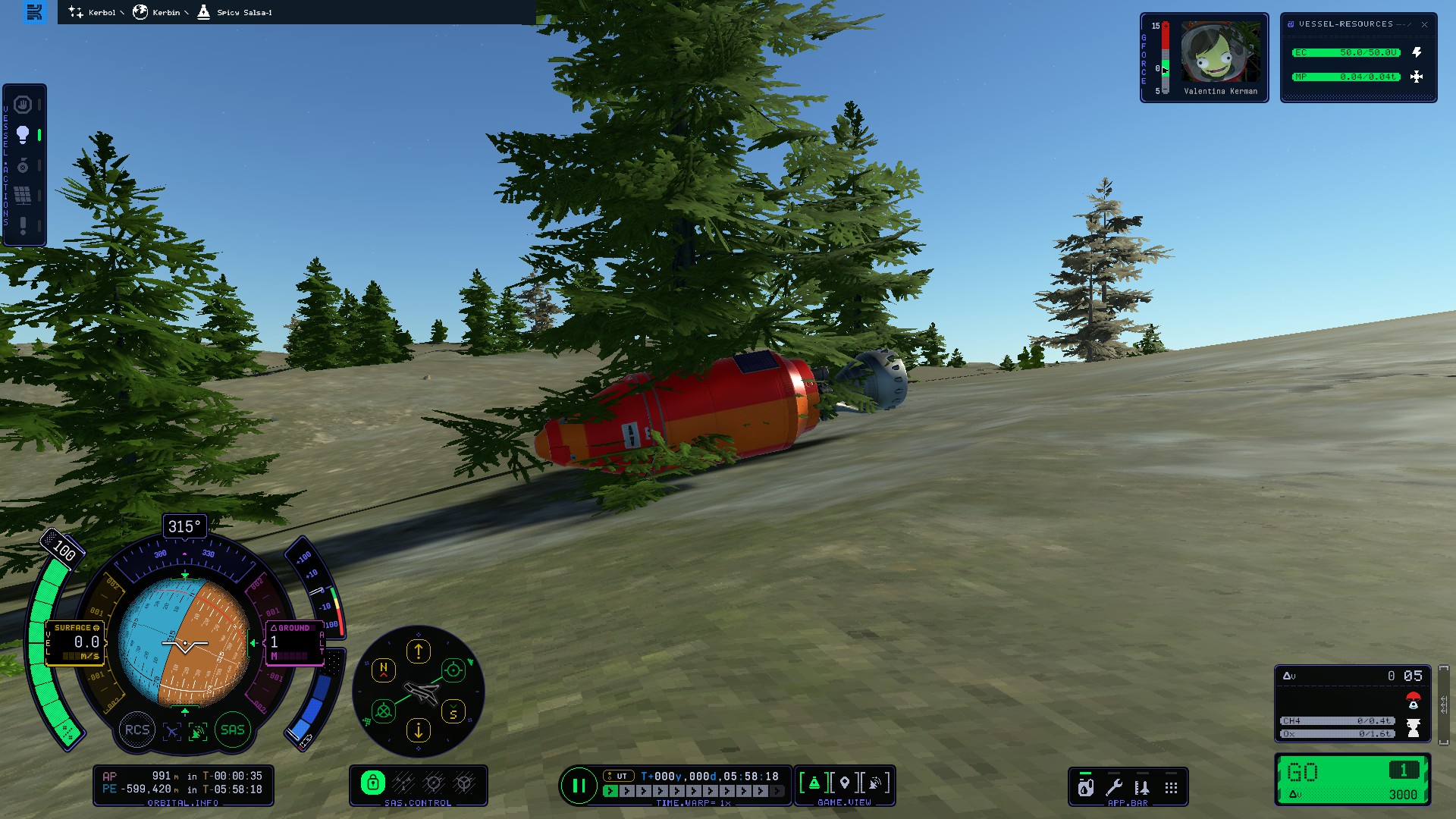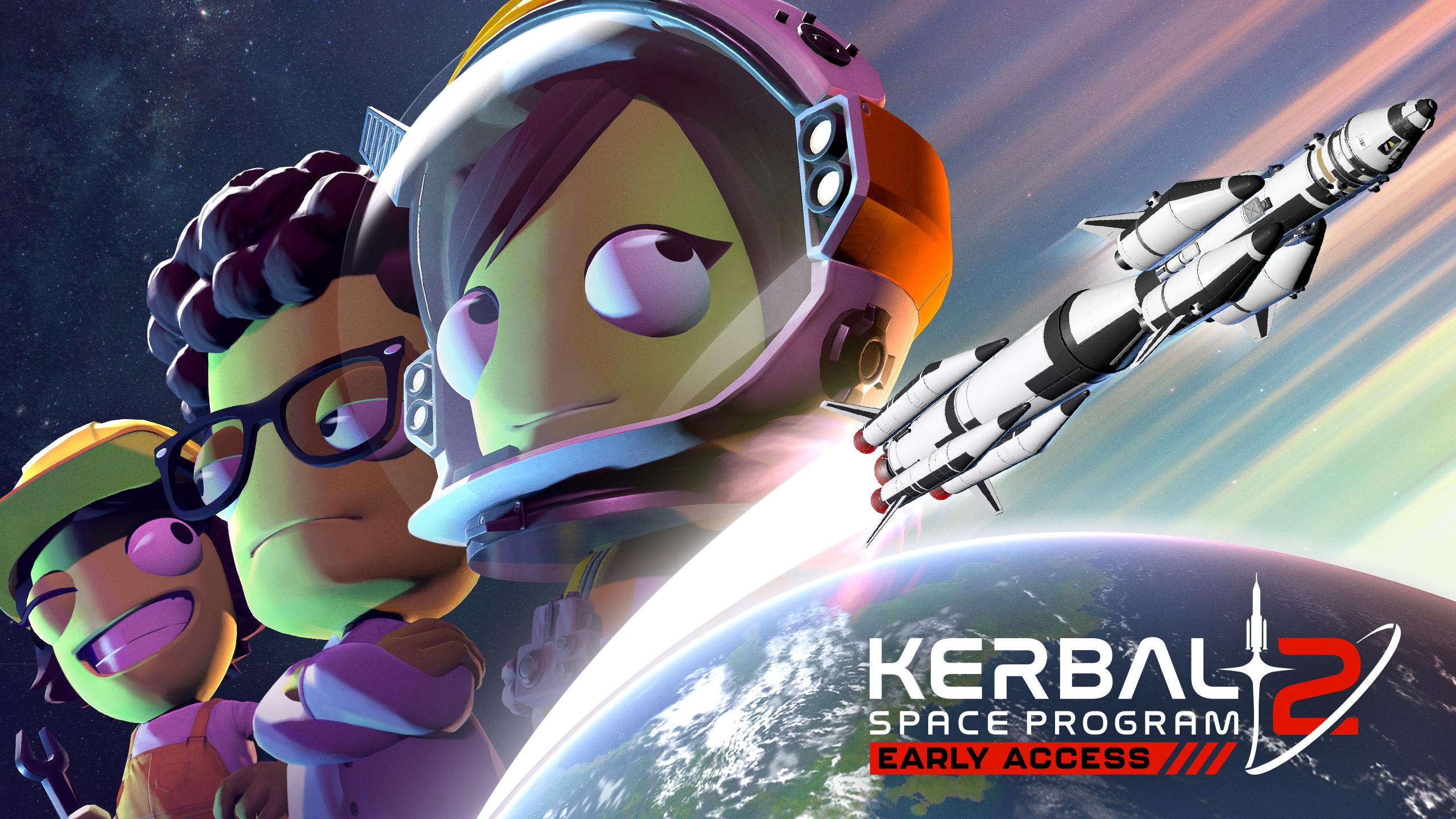Dust off those EVA suits and prepare for launch. Then brace yourself for potentially far more explosions than you can shake a payload at, as the rockets you intensely labor over for hours may falter within mere seconds.
Don’t let that discourage you! As Chris Hadfield, one of the most seasoned and accomplished astronauts, said: “Early success is a terrible teacher.”
What game could possibly deliver such exciting potential energy and cataclysmic, cosmic chaos? To answer that, let’s travel back in time. In 2011 Kerbal Space Program introduced us to adorable green Kerbonauts and intrepid space engineers from the world of Kerbin. On February 24, 2023 the wait was over for the beloved original to finally see its sequel come onto the scene.
The aptly named Kerbal Space Program 2 is the newly released successor of the acclaimed space flight simulation game. Developed by Intercept Games and published by Private Division, KSP 2 is currently only playable on Windows. (Own a PlayStation 5 and Xbox Series X/S? Don’t worry, the developers plan to release versions for those consoles sometime in the future! For Mac and Linux players: Your versions are on the game’s extended roadmap.)
KSP 2 is in Early Access, allowing both veteran and new players to try the various game features as they are rolled out. The production team sees this as an opportunity for gamers to provide feedback that can potentially shape the game’s development.

WHAT IS THE SAME
Early Access includes some features and content from the original, such as the sandbox mode. In fact, this is the only mode available in Early Access. Intrepid engineers of Kerbin (I’m speaking to you, players) design and launch their vessels, with eager anticipation that those rocket ships will successfully leave the planet’s soupy atmosphere. Rinse and repeat mode is necessary, as first launches are not guaranteed success.
Also like its predecessor, the game's rocketry and orbital mechanics are based on real science. The developers consulted with several prolific subject-matter experts to ensure that the game would continue to be rooted on the principles of real-world astrophysics. However, remember this is a video game; while the creators used Newtownian physics to simulate real-world spaceflight, making it largely accurate, it’s not a perfect simulation of reality.
One other aspect that is the same: It supports mods. This is another area where the developers are looking for feedback from modders, especially while the game is in Early Access, as these creative gamers have played a big role in the original’s longevity.

WHAT IS DIFFERENT
Neither Science nor Career modes are available in Early Access. This means that the Spaceplane Hangar, Astronaut Complex, Flagpole, Runway, Research and Development, Mission Control, and Administration Buildings are all absent from the game. KSP 2 is redesigned in many key areas.
Here are some examples:
Revamped assembly and flight interfaces
Reworked, efficient Vehicle Assembly Building (VAB) with parts now available in different sizes (XS, S, M, L, XL)
Multiple sub-assemblies existing parallel to one another
Useful technical info being easier to locate
Increased customization options, such as players being able to change the color of individual pieces
A non-impulsive maneuver planner to help players easily plan complex maneuvers
An original musical score and sound effects (some from live recordings)
The official website (kerbalspaceprogram.com) states that the Kerbolar system has a whole “new generation of engines, parts, fuel, improved variants, procedural parts systems, and much more.” Players will see over 350 new and improved parts have been added to the game’s sequel.

GAMEPLAY EXPERIENCE
The game has a steep learning curve. Just like the original, players need both patience and a willingness to learn. Expect a lot of experimenting before achieving flawless space launches (perfectionists: beware!).
Never fear: P.A.I.G.E. is here. The bubbly AI assistant at the Training Center guides you through the basics of rocketry step-by-step. Players are assigned four missions to complete. This is an engaging way to learn and ensure players are armed for astronomical accomplishments. The four main goals in the tutorials are: building a rocket, launching a rocket, getting into orbit, and returning to Kerbin’s surface. Easy, right?
Going through these baby-steps of spacefaring, I felt–for the most part–that I could actually do it.
And I did. The organized VAB's menus for assembling a rocket made locating parts easier for a beginner like me. Constructing is simply a matter of a few clicks. Forget whether a newbie knows the terminology; building a rocket like this is fun and quick. Besides, I had P.A.I.G.E. explaining things along the way.

Rather than shying away from introducing the technical terminology of astrophysics, the tutorials explain the complicated concepts of astrophysics in as layman’s terms possible. It was genuinely enjoyable to learn about all of this, regardless of knowing that I will not use this knowledge in any other area of my life.
My ship was built, and I was ready for launch. This is part of the game where I felt the most thrilled. The chirpy AI assistant periodically paused the game to explain concepts. I didn't mind the interruptions; I was still learning and taking notes. The keyboard controls weren't difficult to grasp, but the UI has a lot of numerical and visual information to ingest. Besides, I was in fail-proof tutorial mode. I could worry about fuel levels versus altitude later.
With P.A.I.G.E.'s help, I broke through Kerbin's atmosphere. My sidekick-in-space also made sure I practiced moving my vessel more, although for a limited amount. These bite-size lessons are meant to be an appetizer, not a full-course meal. Landing safely thanks to the use of my trusty parachute wrapped up what I felt was the easier portion of the tutorials.

The more in-depth details about how to successfully orbit can be a little daunting for a rookie rocketeer like me. Despite not catching every concept about orbiting closer to the end of the tutorials, I felt ready to start a campaign in sandbox mode. I was an aspiring astronaut from Kerbin determined to build, launch, orbit, and return to the planet’s surface, sans any assistance.
I was armed with (temporary) confidence that venturing across the vastness of space was, well, easy enough. Overcoming orbital challenges could come later.
Clearly there's a significant difference between arranging a few pieces together to create something that looks like a space vessel and constructing one with actual knowledge of rocketry. Enjoy the results from one of my own failed launches at the end of this article.
Fortunately players can re-watch the tutorials and practice as much as they’d like. Whew, because I know I’ll need to review the difference between apoapsis and periapsis.

Despite my setbacks from poor staging, I found myself wanting to keep playing this. I want to win the space race, the one I have with myself to build and launch a spacecraft that can orbit and land without incident.
Let's just say P.A.I.G.E and I will be spending a lot more time together before I join the ranks of those who have already mastered thrust-to-weight ratio with ease. I have plenty of time to practice before the game’s roadmap unfolds, releasing even (potentially) more arduous concepts.
Challenge accepted. I am excited.
ROADMAP OF THE FINAL FRONTIER: FROM EARLY ACCESS TO 1.0 RELEASE
The developers have stated that the 1.0 version of KSP 2 will include significantly more features than what Early Access offers. KSP 2’s roadmap appears to include:
Science with tech tree progression
Colonies (both orbital and planetary)
Interstellar travel
Exploration with resource gathering
A very long-awaited multiplayer mode.
Aside from what players see on the roadmap, other items players may see over time: new propulsion methods, delivery routes, and additional, yet-to-be-revealed features.

PROS
A road map that includes some exciting features for the future
Sharper graphics than ever before
Quality of life changes, such as rocket construction being less painful
Replayable tutorials that convey complex topics in the simplest terms possible
Weekly Challenges
11 supported languages for the game’s interface and subtitles (English is the only fully supported audio language at the moment.)
Cute Kerbals
CONS
At the time of writing this article, limited content and features
Very much a work-in-progress
Potential to experience poor technical performance, including a lot of bugs
- High spec demands for PC players (Developers have said this will decrease over time as they further optimize the game.)

CONCLUSION
Not the cleanest launch of a game, KSP 2 has had its fair share of criticism thus far. However, the developers have been aggressively bug-smashing with no plans to stop until the game provides players a smooth ride to space. During an AMA (Ask Me Anything) stream in March 2023, creative director Nate Simpson said that “stability, performance, [and] new features” are the team’s top priorities.
Yes, the game is meant to be bigger than ever before, especially with the new features like multiplayer mode and colonies. The developers fully redesigned it from the ground up to meet players’ demands for a modern space exploration game. A whole new generation of wanna-be spaceflight experts can now enjoy embodying adorable green Kerbonauts, learning some rocket science and becoming in-game astrophysicists.

There’s no doubt that KSP 2 appears to maintain some of the prodigious scaffolding from its predecessor. Both renditions provide gamers with ingenious and comedic content.
In the end, individual players need to decide for themselves when to purchase Kerbal Space Program 2. While the space-flight simulator is currently bereft of all that a fully released version would include, gamers who buy while it's in Early Access get the advantage of a lower price point. According to the game’s official website, the product’s cost will increase when the 1.0 version is released. Once future content is available to players, this sequel could very well be a cult classic alongside the original.

Pictured above: The final result of a rocket failure by yours truly.


